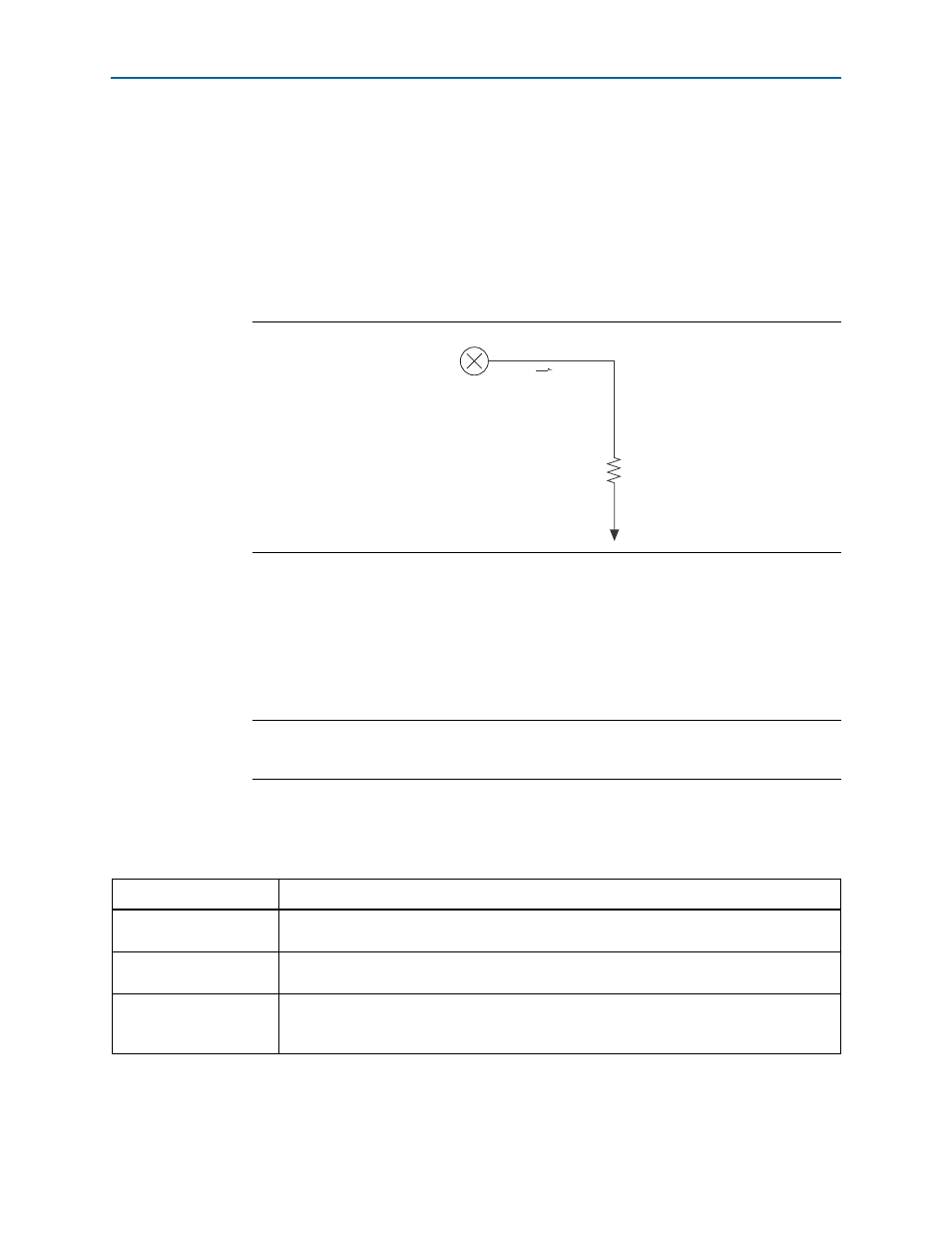Thermal analysis, Thermal analysis –4 – Altera PowerPlay Early Power Estimator for Altera CPLDs User Manual
Page 14

2–4
Chapter 2: PowerPlay Early Power Estimator Worksheets
Power Estimation Using the PowerPlay Early Power Estimator
PowerPlay Early Power Estimator for Altera CPLDs User Guide
December 2010
Altera Corporation
Thermal Analysis
To determine the junction temperature (T
J
) of the device in °C, the ambient
temperature and airflow are taken into consideration by the PowerPlay EPE
spreadsheet.
The device is considered a heat source and the junction temperature is the
temperature at the device. The thermal resistance of the path is referred to as the
junction-to-ambient thermal resistance (
JA
the PowerPlay EPE spreadsheet.
The PowerPlay EPE spreadsheet determines the
JA
based on the device, package, and
airflow selected in the input parameters section.
The PowerPlay EPE spreadsheet calculates the total power based on the device
properties which provide
JA
and the ambient and junction temperature, as shown in
.
lists the thermal analysis parameters in the PowerPlay EPE spreadsheet, as
Figure 2–2. PowerPlay Early Power Estimator Thermal Model
Equation 2–1.
Power (P)
T
J
T
A
q
JA
Heat Source
P
T
J
T
A
–
JA
------------------
=
Table 2–3. Thermal Analysis Section Information
Column Heading
Description
Junction Temp, T
J
(°C)
Represents the device junction temperature estimation based on the supplied thermal
parameters.
JA
Junction-Ambient
Represents the junction-to-ambient thermal resistance between the device and the ambient air
(in °C/W).
Maximum Allowed T
A
(°C)
Represents a guideline for the maximum ambient temperature (in °C) that you can subject the
device to without violating the maximum junction temperature, based on the supplied cooling
solution and device temperature grade.
